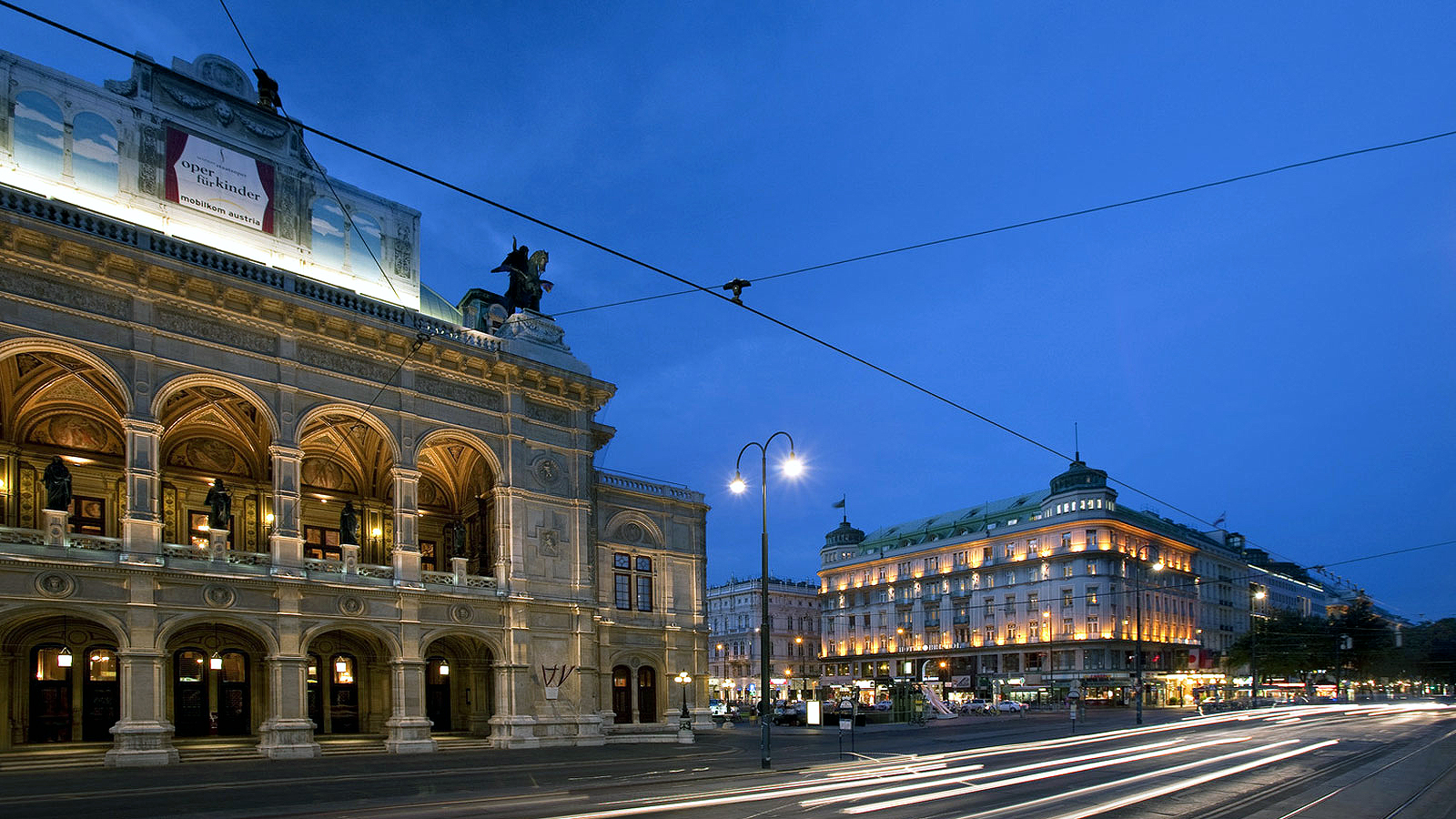Compared with October 2015, Europe reported nearly flat occupancy, down 0.4% to 75.3%. Africa experienced a 5.1% drop in occupancy to 58.5%, but an 8.2% rise in ADR to US$105.71 pushed RevPAR up 2.8% to US$61.82. Hotels in the Central/South America region reported mostly negative results in the three key performance metrics when reported in U.S. dollar constant currency.
Hotels in Europe reported negative results in the three key performance metrics when reported in euro constant currency, according to October 2016 data from STR.
Compared with October 2015, Europe reported nearly flat occupancy, down 0.4% to 75.3%. Average daily rate (ADR) dipped 1.6% to 113.51 euros. Revenue per available room (RevPAR) fell 2.0% to 85.47 euros.
Performance of featured countries for October 2016 (local currency, year-over-year comparisons):
- Portugal recorded its highest ADR (EUR94.78) for the month of October since 2003 as well as its sharpest year-over-year increase in ADR (+13.0%) for any October on record. Meanwhile, occupancy increased 3.0% to 77.8%. As a result, RevPAR grew 16.3% to EUR73.72. STR analysts believe that the country’s hotels have benefitted from an increase in arrivals, which could very likely be due to tourists avoiding countries with security concerns such as Turkey or France.
- Slovakia posted double-digit RevPAR growth (+21.5% to EUR51.90) as a result of a 7.7% increase in occupancy to 73.7% and a 12.8% lift in ADR to EUR70.42. STR analysts note that the country’s hotels fared slightly better on weekends than weekdays during the month and attribute overall performance to a rise in international tourism.
- The United Kingdom saw a 1.8% decline in occupancy to 80.9%. The decrease came in comparison with a record-high occupancy level for an October (2015), when the UK hosted major events like the Rugby World Cup. ADR dropped 2.9% in October 2016 to GBP91.84, and RevPAR dipped 4.7% to GBP74.29. Overall, the UK’s supply continued to grow, up 1.9% in October, while demand was flat.
Performance of featured markets for October 2016 (local currency, year-over-year comparisons):
- Budapest, Hungary, posted its highest occupancy level for an October on record with a 15.5% increase to 87.7%. October also brought Budapest’s fourth highest actual ADR for any month since 1996, with an 8.8% rise to HUF27,939.28. As a result, RevPAR grew 25.6% to HUF24,515.18. According to STR analysts, the market has thrived as an affordable and popular destination.
- Sofia, Bulgaria, registered an actual occupancy level of 76.3% (+10.1%), the first time since October 2004 that the market achieved an occupancy level higher than 70%. The market also recorded its highest actual ADR (+9.0% to BGN148.48) since November 2009, and RevPAR grew 20.0% to BGN113.26. According to STR analysts, an increase in the number of flights from low-cost airlines such as Ryanair and Wizz Air has significantly helped hotel performance. Occupancy increased 11.4% on weekends, suggesting a large amount of leisure travel.
- Zurich, Switzerland, continued to struggle, reporting an ADR of CHF217.24 (-6.0), the lowest actual ADR for an October in the market since 2004. Meanwhile, occupancy grew 0.5% to 74.4% and RevPAR dropped 5.5% to CHF161.53. STR analysts note that Zurich’s performance has been affected by a decline in business travel, as occupancy was down 1.4% during weekdays in October. ADR, on the other hand, declined across both weekdays and weekends.
Middle East and Africa hotel performance
Hotels in the Middle East reported negative October 2016 results, while hotels in Africa posted mixed results in the three key performance metrics when reported in U.S. dollar constant currency, according to data from STR.
Compared with October 2015, the Middle East reported a 4.4% decrease in occupancy to 64.0%, a 9.0% drop in average daily rate (ADR) to US$174.19 and a 13.0% decline in revenue per available room (RevPAR) to US$111.48.
Africa experienced a 5.1% drop in occupancy to 58.5%, but an 8.2% rise in ADR to US$105.71 pushed RevPAR up 2.8% to US$61.82.
Performance of featured countries for October 2016 (local currency, year-over-year comparisons):
- Jordan recorded increases in occupancy (+3.9% to 60.6%) and RevPAR (+2.4% to JOD60.66). ADR in the country decreased 1.5% to JOD100.11. Rates in the country have been consistently cheaper (-4.3% year to date), while demand has trended upward, reaching 6.9% growth through the first 10 months of 2016. STR analysts note that the demand upswing has come while tourist arrivals have fallen year to date (-1.3% according to the Ministry of Tourism & Antiquities).
- Nigeria posted increases across the three key performance metrics. Occupancy rose 4.2% to 48.3%, ADR was up 13.3% to an all-time high for the country (NGN49,251.44) and RevPAR grew 18.0% to NGN23,795.19. STR analysts attribute the spike in rate to inflation in the country, while occupancy has been helped by slowing supply growth during the recession.
- The United Arab Emirates reported decreases in each of the three metrics. Occupancy dipped 2.9% to 75.6%, and ADR dropped 9.6% to AED668.05, the lowest for an October since 2005. As a result, RevPAR declined 12.3% to AED505.34. October was the 22nd consecutive month of year-over-year ADR decreases in the United Arab Emirates, due in part to consistent and significant supply growth (+5.1% year to date). At the same time, demand has remained strong, up 5.0% year to date.
Performance of featured markets for October 2016 (local currency, year-over-year comparisons):
- Cairo, Egypt, experienced growth in occupancy (+4.6% to 57.9%) and RevPAR (+4.5% to EGP478.29) while ADR was nearly flat (-0.1% to EGP826.62). Demand is up 11.1% year to date in the market, and STR analysts believe that strong weekend business indicates a recovery in leisure demand. That recovery in hotel demand has come even with a 41.8% drop in tourist arrivals to Egypt through September, as reported by the Central Agency for Public Reserves and Statistics (CAPMAS). On 6 October, Armed Forces Day, Cairo’s occupancy jumped to 67.0%, which was more than 9% higher than the average for the month.
- Dubai, United Arab Emirates, reported declines across the three key performance metrics. Occupancy fell 2.0% to 78.0%, ADR was down 9.8% to AED764.63 and RevPAR dropped 11.6% to AED596.16. Strong supply growth (+5.8% year to date) has slightly outpaced a year-to-date demand increase (+5.6%) in the market. In addition to the strong development pipeline, STR analysts attribute Dubai’s performance to a decline in visitors from the drop in oil prices.
- Riyadh, Saudi Arabia, reported decreases in each of the three metrics: occupancy (-7.2% to 56.2%), ADR (-3.6% to SAR796.30) and RevPAR (-10.6% to SAR447.46). As one of the Gulf Cooperation Council’s key hubs, Riyadh is heavily dependent on corporate travel. That business has suffered with the drop in oil prices, and coupled with significant supply growth (+8.9% year to date), Riyadh’s performance has slumped.
Central/South America hotel performance for October 2016
Hotels in the Central/South America region reported mostly negative results in the three key performance metrics when reported in U.S. dollar constant currency. Compared with October 2015, the Central/South America region reported a 6.6% decrease in occupancy to 56.5%. Average daily rate (ADR) was up 0.9% to US$89.76. Revenue per available room (RevPAR) dipped 5.8% to US$50.75.
Performance of featured countries for October 2016 (local currency, year-over-year comparisons):
- Chile reported declines across the three key performance metrics. Occupancy fell 5.5% to 68.1%, ADR dropped 11.1% to CLP123.22 and RevPAR declined 16.0% to CLP83.88. The country experienced a 3.6% decline in demand after three consecutive months of demand growth. Santiago, the capital city, was hit the hardest, with a 7.2% drop in occupancy and a 17.9% decrease in ADR. STR analysts attribute the performance in part to sluggish economic conditions linked with the mining sector.
- Ecuador saw a 1.3% increase in occupancy to 68.8%, and an inflation-driven 22.1% rise in ADR to US$123.90 pushed RevPAR up 23.8% to US$85.21. STR analysts note that strong supply growth (+2.9%) was outpaced by demand growth (+4.3%) during the month, helped by Habitat III, the United Nations’ Conference on Housing and Sustainable Urban Development (17-20 October).
- Peru reported decreases in each of the three key metrics. Occupancy fell 2.5% to 70.5%, ADR dropped 23.9% to PEN436.10 and RevPAR fell 25.8% to PEN307.49. STR analysts attribute the country’s performance declines to a 29.4% fall in Group demand (bookings of 10 or more rooms) and a comparison with a strong month in 2015 when the country hosted annual meetings of the World Bank Group and the International Monetary Fund.
Performance of featured markets for October 2016 (local currency, year-over-year comparisons):
- Buenos Aires, Argentina, posted 86.3% growth in RevPAR to ARS1,448.71 as a result of a 7.8% increase in occupancy to 69.4% and a 72.8% rise in ADR to ARS2,087.79. STR analysts note that Argentina’s hotel market has benefitted from an upward economic trend since the current government put financial policies in place for 2016. Due to inflation, ADR for the month reached its highest level on record. The IFSSH and IFSHT Triennial Congress (24-28 October) helped boost performance as well.
- Panama City, Panama, experienced its first RevPAR increase (+5.7% to PAB50.97) since June. Occupancy drove growth for the month, up 8.5% to 53.7%, while ADR was down 2.6% to PAB94.88. STR analysts believe that hotels in Panama have benefited from a 7% increase in arrivals from Europe, although arrivals from the U.S. have declined compared with last year, as reported by the Panamanian Tourism Authority.
- Sao Paulo, Brazil, reported its fourth month in a row with declines across all three key performance indicators. Occupancy decreased 5.8% to 58.3%, ADR dropped 10.0% to BRL308.22 and RevPAR fell 15.2% to BRL179.74. Meanwhile, new supply continued to enter the market (+1.2%), marking a fourth consecutive month with supply growth above 1.0%. STR analysts cite economic conditions in the country as another reason behind the negative performance.
Tatiana is the news coordinator for TravelDailyNews Media Network (traveldailynews.gr, traveldailynews.com and traveldailynews.asia). Her role includes monitoring the hundreds of news sources of TravelDailyNews Media Network and skimming the most important according to our strategy.
She holds a Bachelor's degree in Communication & Mass Media from Panteion University of Political & Social Studies of Athens and she has been editor and editor-in-chief in various economic magazines and newspapers.























































































































































































































